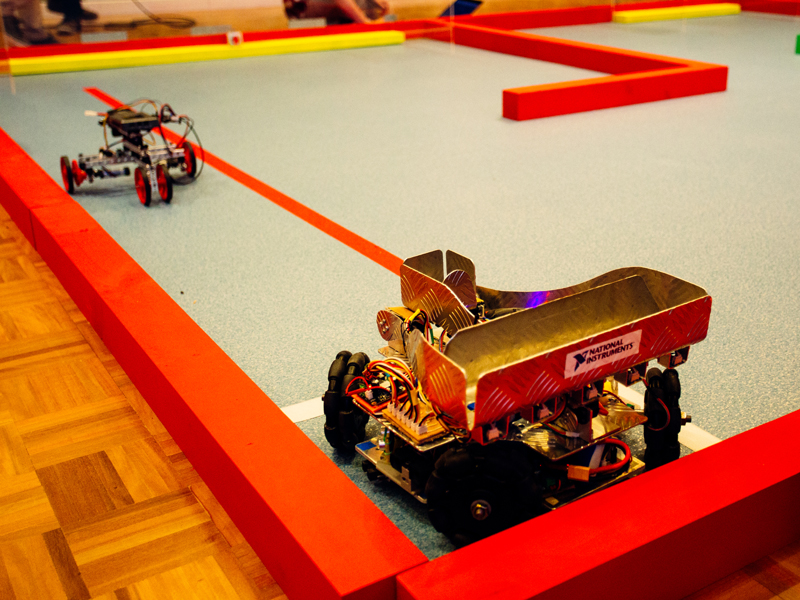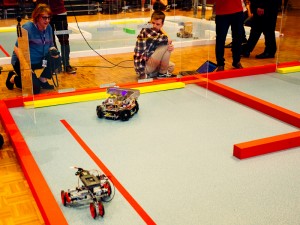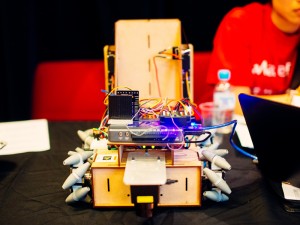Autonomous robot assistants may soon become a common feature in medical settings
The robot carefully placed the medications on the nurses’ bench and swivelled 180 degrees on its axis towards the operating theatre.
It sped off, only to abruptly stop and then uselessly wheel around in circles, drawing gasps from onlookers.
The little robot had only three more packages to deploy, but instead of the sure-footedness it had shown earlier in the day, it was now wildly careening towards the red line marking danger.
The atmosphere was tense.
Skirting just centimetres from the line, its internal navigation systems seemed to finally correct and the squat, flat, box of a machine pulled up at the operating room.
The audience exhaled as the medicines were flawlessly deposited on the bench. Then the robot swivelled again, towards its final goal: home.
Confident and fast, it sped back to the white holding zone.
Cheers erupted from the crowd. As it pulled in, smiles broke across the faces of the robot’s creators … and then it smashed through a wall.
That was how Swinburne University snatched defeat from the jaws of victory at this year’s National Instruments Autonomous Robotics Competition held in Sydney on Monday 26 September.
Instead, the University of Wollongong team emerged as the champion of the “Hospitals of the Future” challenge, ultimately proving that their creation was better at navigating, avoiding obstacles and handling objects.
The 24 student teams across Australia and New Zealand had seven months to build and program a robot that could independently perform all the basic tasks that would be required of a carrier robot in a hospital.
One such robot is already used in the US to ferry medications, medical records, food, linen and waste around hospitals.
While the students’ creations lack the size and complexity to be much help right now, commercial robots promise to reduce the number of mundane and laborious tasks currently performed by hospital staff, freeing them up for more clinically important jobs.
Past winners of the competition had gone on to have real-world success with their robots, said Mark Phillips, co-founder of the competition and marketing manager for National Instruments.
One group created a robot “physiotherapist” that can help stroke patients with specific exercises, he said.
Of course, there’s a pervasive fear that robots might someday become so sophisticated they make humans redundant altogether.
It’s not a fear shared by Professor Hung Nguyen, who has been developing or creating medical robots for the past 20 years.
“We use a lot of robots already – but they don’t look like robots,” the director of health technologies at the University of Technology Sydney said, pointing to the autonomous technology used in cars to prevent flipping on corners.
A hospital bed of his own design has eliminated the need for humans to push them manually – potentially reducing workers’ compensation claims.
Instead, the bed can be programmed to follow people to their desired destination.
In the future, mattresses might even be able to identify sore spots and move itself around to accommodate them, Professor Nguyen said.




